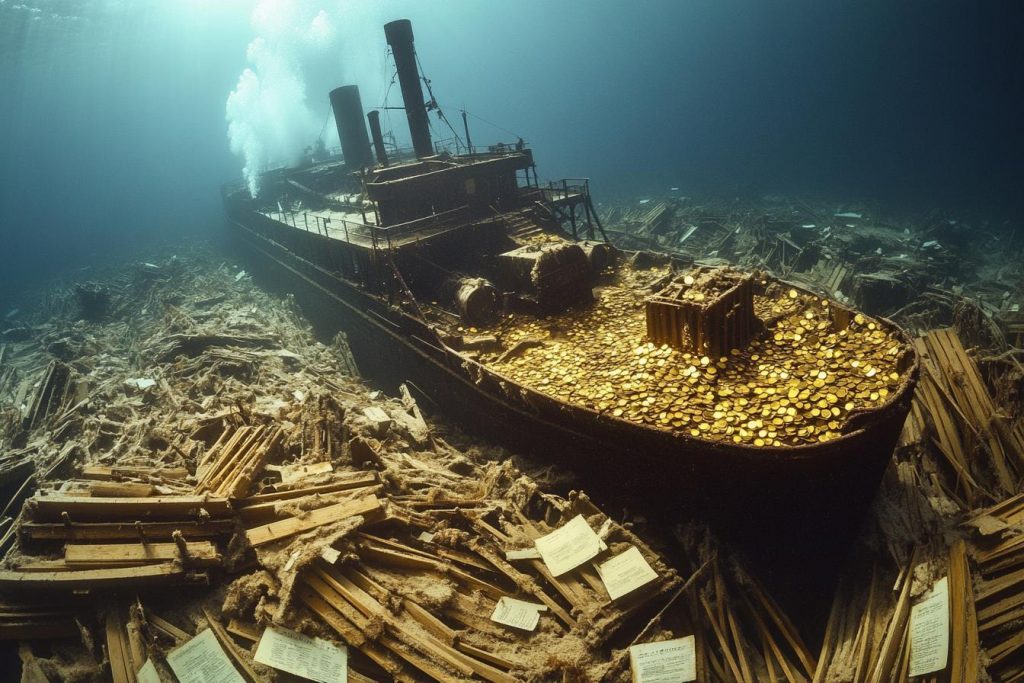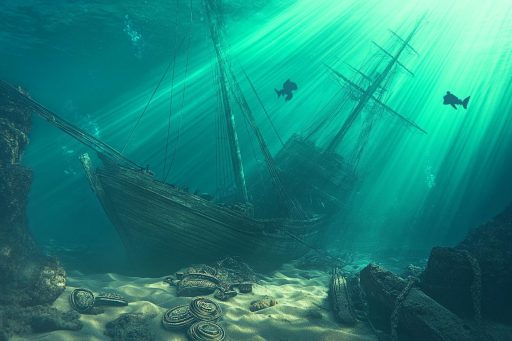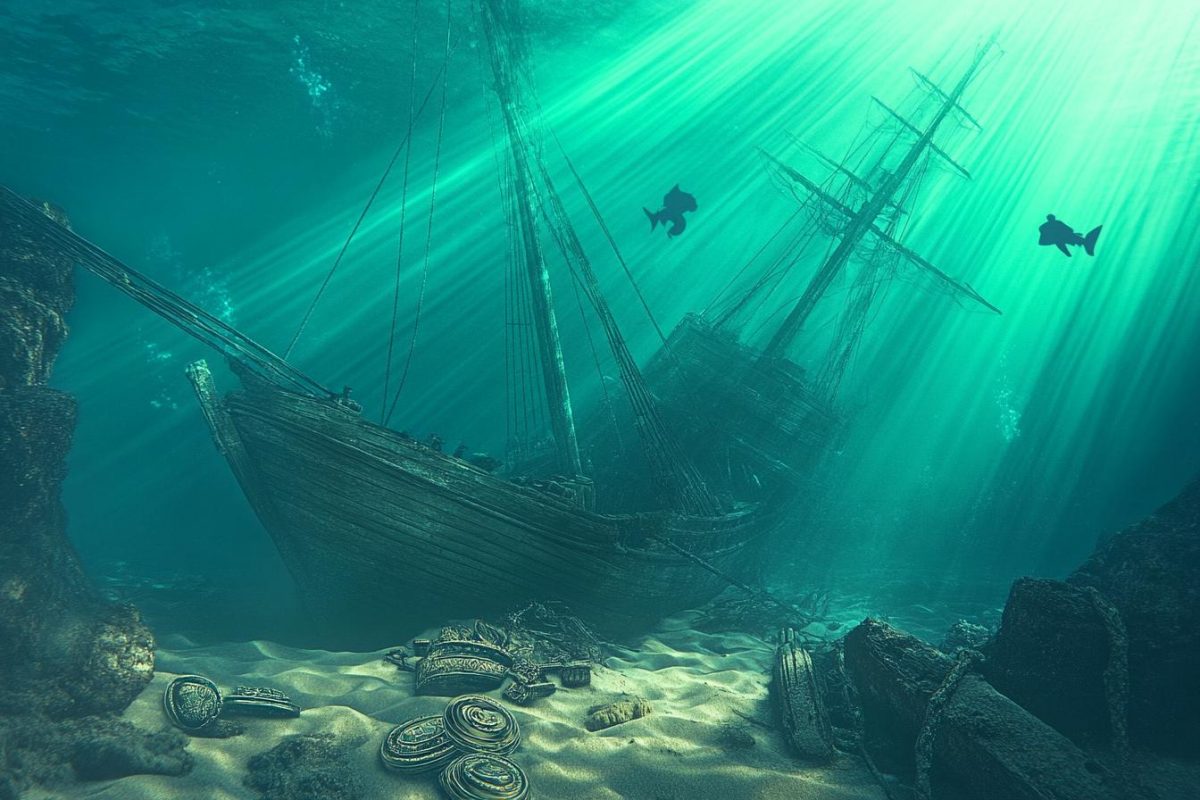
Beneath the waves lie fragments of forgotten empires, lost voyages, and secrets long buried by the sea. Each shipwreck is more than a tragedy—it’s a portal into the past that can overturn everything we thought we knew about exploration, trade, and even human migration. These underwater discoveries have challenged historical narratives, confirmed long-rumored legends, and uncovered technology far ahead of its time. Prepare to dive into the depths where history has been rewritten in rust, coral, and silence.
The Antikythera Shipwreck

Discovered off the coast of a Greek island, the Antikythera wreck stunned archaeologists when it yielded the Antikythera Mechanism—a complex gear system thought to be the world’s first analog computer. The ship, dating back to the first century BCE, carried treasures from the Hellenistic world that challenged assumptions about ancient technological capabilities. Its artifacts reshaped timelines of engineering, science, and Mediterranean trade routes. The wreck’s discovery proved ancient civilizations were more advanced than once believed.
The Titanic

The sinking of the Titanic in 1912 wasn’t just a maritime disaster—it was a cultural and technological turning point. When its wreck was found decades later, it revealed a chillingly intact time capsule of early 20th-century luxury, engineering flaws, and human stories frozen in time. The ship’s rediscovery changed safety protocols worldwide and reignited public fascination with deep-sea exploration. It reminded the world that even “unsinkable” dreams can be swallowed by the sea.
The Vasa

Raised from the seabed in near-perfect condition, the 17th-century Swedish warship Vasa capsized on its maiden voyage and sank just minutes after launch. Its resurrection provided an unprecedented glimpse into shipbuilding, naval warfare, and life during the Thirty Years’ War. More than just a failed warship, the Vasa became a floating museum of history that altered our understanding of early modern Europe. Its preservation is considered one of the greatest feats of marine archaeology.
The Mary Rose

Once Henry VIII’s pride, the Mary Rose sank in 1545 and remained hidden until its discovery centuries later. When salvaged, it revealed a treasure trove of Tudor-era artifacts—clothing, weapons, and even human remains. These items reshaped what we know about the daily lives of soldiers and sailors during the English Renaissance. It became a landmark in conservation science and historical reconstruction.
The HMS Erebus and HMS Terror

Lost in the icy grip of the Arctic during the doomed Franklin Expedition, these British ships vanished in 1846—only to be found in stunning condition over 150 years later. Their discovery provided critical clues about early polar exploration and the harsh conditions faced by the crew. The wrecks also deepened the mystery, as questions about cannibalism, disease, and leadership still linger. They forced historians to reevaluate Victorian-era ambitions and survival in uncharted realms.
The Uluburun Shipwreck

Dating back to the Late Bronze Age, this wreck off the coast of Turkey contained cargo from at least seven ancient civilizations. It’s one of the oldest known shipwrecks ever found and provided irrefutable proof of an interconnected trade network in 1300 BCE. Items onboard included Egyptian jewelry, Cypriot pottery, and Canaanite weapons—suggesting a level of globalization far earlier than believed. It redefined early maritime commerce and diplomacy.
The Black Swan (Mercedes) Wreck

Found by treasure hunters off the coast of Portugal, this sunken Spanish frigate from the early 1800s contained more than 500,000 silver and gold coins. The legal battle over ownership reshaped maritime law and salvage rights on a global scale. Beyond the treasure, the ship’s remains revealed critical details about shipbuilding techniques during the Napoleonic Wars. It wasn’t just a goldmine—it was a legal and historical game-changer.
The Queen Anne’s Revenge

Once captained by the infamous pirate Blackbeard, this ship was discovered off the coast of North Carolina. Its wreck confirmed long-disputed pirate legends and offered a rare look into the daily operations of a pirate vessel. Artifacts like cannons, medical tools, and navigational instruments shed new light on the golden age of piracy. The ship rewrote pirate history, moving it from myth to tangible reality.
The SS Central America

Known as the “Ship of Gold,” this 19th-century steamship sank with tons of gold during a hurricane. Its discovery in the late 20th century helped explain the Panic of 1857, a major financial crash triggered by the loss. The wreck revealed much about the economics of the Gold Rush era and spurred advancements in deep-sea technology. It linked maritime loss directly to global financial history.
The Java Sea Wreck

This sunken 9th-century ship was found with an immense cargo of Chinese ceramics, gold artifacts, and rare spices. Its contents confirmed extensive maritime trade between Southeast Asia and China centuries earlier than expected. The ship’s design hinted at forgotten shipbuilding techniques, challenging previously held views on Asian maritime dominance. It broadened the map of ancient commerce and cultural exchange.
The San José Galleon

Often called the “holy grail” of shipwrecks, the San José was a Spanish galleon carrying vast treasure when it was sunk by the British in 1708. Found off the coast of Colombia, it reignited debates over cultural heritage and sovereign ownership. The ship’s discovery provided insights into Spain’s colonial ambitions and the economic tensions that led to naval conflict. Its remains hold more than wealth—they hold the untold stories of empires.
The Batavia

The Dutch East India Company’s Batavia sank off the coast of Australia in 1629, leading to one of history’s most horrific mutiny tales. The wreck helped historians understand Dutch colonial ambitions and brutal maritime justice. Artifacts and skeletal remains revealed a dark story of survival, betrayal, and murder. Its excavation turned a footnote in history into a chilling saga of human nature at sea.
The Wreck of the San José – A Treasure That Sparked Global Tensions

The Spanish galleon San José sank off the coast of Colombia in 1708, carrying what’s believed to be the most valuable sunken treasure in history—gold, silver, and emeralds worth billions today. For centuries, its location remained a mystery until it was finally discovered in 2015, reigniting international disputes over ownership between Colombia, Spain, and private companies. Beyond its riches, the shipwreck sheds light on colonial trade, naval warfare, and the brutal economics of empire. The San José is more than a treasure—it’s a time capsule of global power struggles buried beneath the sea.
What the Sea Brought Back

Each of these shipwrecks is more than just a broken hull and scattered cargo—they’re underwater archives that challenge the stories we once told. They connect forgotten sailors, lost cultures, and sunken secrets with modern technology and evolving curiosity. As oceans give up their ghosts, history itself must adapt and rewrite its chapters. What still lies buried may change everything we think we know.





